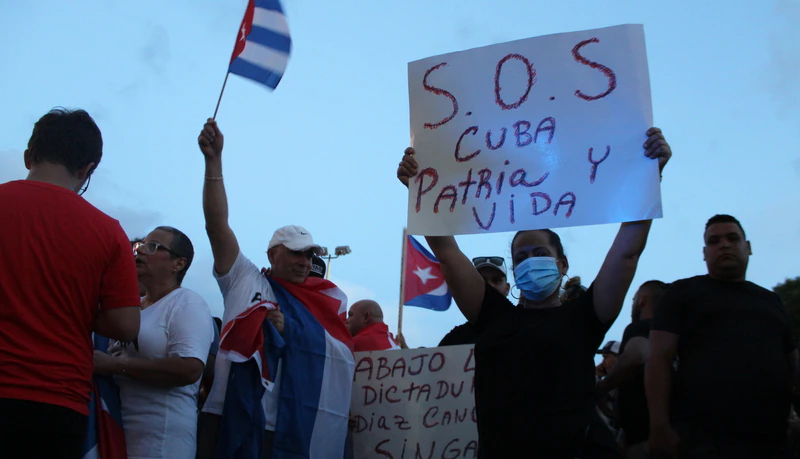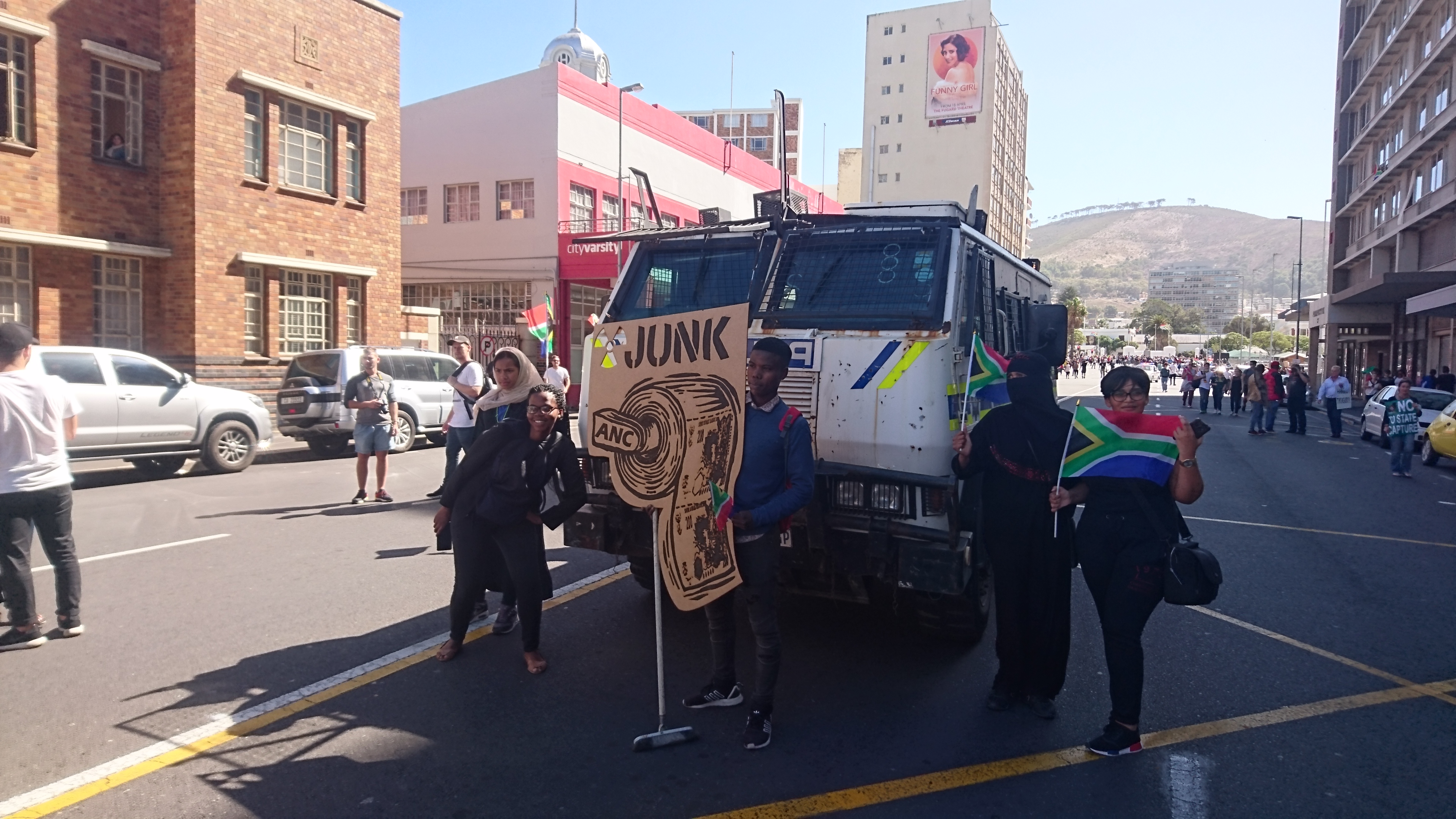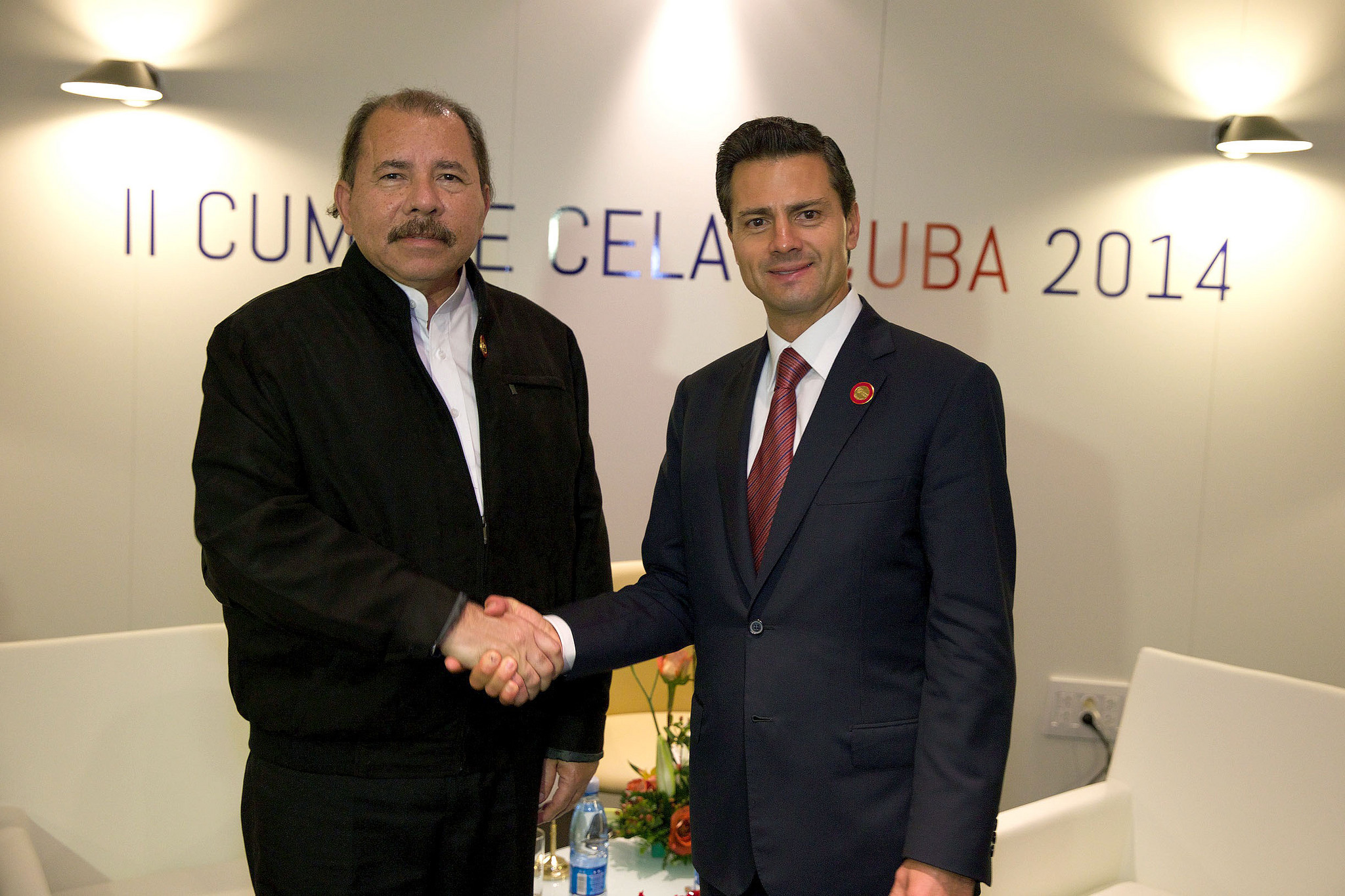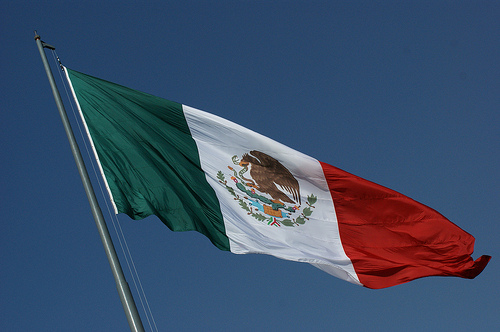Guest post by William M. LeoGrande
“The only thing that could cause a social explosion in this country,” a Cuban friend told me in 2019, “is a lack of food and medicine.” Today, the grocery and pharmacy shelves are bare, the COVID-19 pandemic is resurgent, inflation is eating away at workers’ real incomes, and periodic electricity blackouts are aggravating everyone’s misery.
The social explosion my friend foresaw broke out on Sunday, July 11, beginning in a poor suburb of Havana, then spreading via social media to a dozen cities across the island, drawing thousands of people into the streets—marching, shouting anti-government slogans, and, in some places, battling police and looting. Not since the 1994 riot on the Havana waterfront, at the depth of the depression caused by the collapse of the Soviet Union, has Cuba experienced such serious social unrest.
A number of factors—economic, social, and political—converged this year to ignite these unprecedented demonstrations in a country whose communist regime has managed to keep a tight lid on opposition for more than half a century.
First and foremost, the Cuban economy is a shamble and the government is broke. Over the past two years, Cuba has lost every major source of foreign exchange earnings. Venezuelan exports of cheap oil for Cuba have been cut by half, causing fuel shortages. The Trump administration convinced Latin American countries to kick out Cuban doctors working on medical services contracts. COVID-19 shuttered the tourism industry, the central pillar of the domestic economy. Before leaving office, Trump closed the principal channel through which Cuban Americans sent remittances to relatives—a loss to Cuba of $3.5 billion annually, slashing the living standard of 56 percent of Cuban families.
Cuba’s GDP fell 11 percent in 2020 and is still falling. Imports dropped some 35 percent. Foreign reserves are exhausted and the government does not have the money to import adequate supplies of even basic necessities like food, medicine, and fuel.
In January, the government devalued the currency—something Cuban economists have been recommending for years—but the resulting inflation outstripped the wage increases decreed by the government, eroding people’s real purchasing power. COVID-19, which Cuba managed to control at first, broke out earlier this year when the island tried to reopen tourism. Infections are now at record levels and the healthcare system is buckling under the strain.
Some people are suffering more than others. Inequality, especially along racial lines, has been visibly growing. Cubans of African descent are less likely to have family abroad to send remittances, less likely to have jobs that provide wages in foreign currency, and less likely to have savings to cushion them in hard times. It’s no coincidence that the recent protests began in some of Cuba’s poorest neighborhoods.
Economic desperation is the driver of the grievances that led Cubans into the streets. But the protests had a distinctly political thrust, with chants of “Libertad!” (Liberty), “Abajo la dictadura” (Down with the dictatorship), and “Patria y Vida,” (Homeland and Life). The latter is the title of a recent hip-hop video produced by some of the island’s best known artists, and has become the anthem of regime opponents. It’s a clever reverse play on the revolutionary slogan, “Patria o Muerte” (Homeland or Death).
Although the economy is not as bad today as it was in the 1990s, when GDP fell by 35 percent and real incomes fell by more than three-quarters, the political risk to the regime is greater. In the 1990s, Cubans who lived through the insurrection against Batista or came of age in the early euphoric years of the revolution were a majority of the adult population and a core base of regime support. Today that generation is in their 70s and 80s, and they constitute less than 15 percent of the population. For Cubans who came of age after the fall of the Soviet Union, “The Revolution” has meant persistent economic privation and failed reforms. By large majorities, they are discontented with the economic and political status quo.
The “historical” leaders of the revolution have also passed from the scene. The public outpouring of grief at Fidel Castro’s death in 2016 showed that many Cubans still venerated him. No one could match Fidel’s charisma, but the other historical leaders also enjoyed a measure of prestige and legitimacy as founders. Last April, led by Raúl Castro, they all stepped down from the leadership of the Communist Party, replaced by people born after 1959. The legitimacy of Cuba’s new leaders will depend on their performance, especially their economic performance—a serious vulnerability right now.
Social media played a central role in the spread of the July 11 demonstrations as people shared video of events as they happened. Most Cubans have Internet access and young people are avid users of social media. Technology enables them to find one another, build virtual social networks, and communicate unconstrained by traditional “gatekeepers.” That makes the Internet a powerful instrument for mobilization around shared grievances—real or imagined—and virtual communities can sometimes take real world action, as happened on July 11. Not surprisingly, part of the Cuban government’s response was to cut Internet service during the protests, but the photos and videos continue to circulate.
Celebrations in Miami notwithstanding, Cuba’s resilient authoritarianism shows no signs of near-term collapse. There are no indications of serious elite division or wavering loyalty of the security forces, and the regime demonstrated its ability to mobilize supporters for a battle to control the streets. Appeals to nationalism in the face of US hostility still resonate with some.
The July 11 demonstrations were largely spontaneous and leaderless, not the result of an organized plan. Social media can be a catalyst for such protests, but Cuban dissidents lack the organizational infrastructure to turn explosions of discontent into a sustained opposition movement that would pose a real challenge to the regime. Migration pressures are rising, too. If disaffected Cubans decide that the opportunity for meaningful “voice” is foreclosed, they may choose “exit,” like so many before them. This export of potential opponents to Miami is one reason the Cuban dissident movement has gained so little traction over the years.
The question in the near term is whether the July 11 events will trigger a cycle of protests as has happened in other countries, or whether the government can put the lid back on the boiling pot by arresting opposition leaders, calling out its supporters to dominate the streets, and promising measures to take the edge off people’s economic misery. It’s a formula that has worked for the government in the past, but never before has it faced such widespread opposition. Even if the regime can contain overt political unrest, the economic and social grievances that burst forth on July 11 will still be there, unresolved.
William M. LeoGrande is Professor of Government at American University in Washington, DC, and co-author with Peter Kornbluh of Back Channel to Cuba: The Hidden History of Negotiations between Washington and Havana (University of North Carolina Press, 2015).







